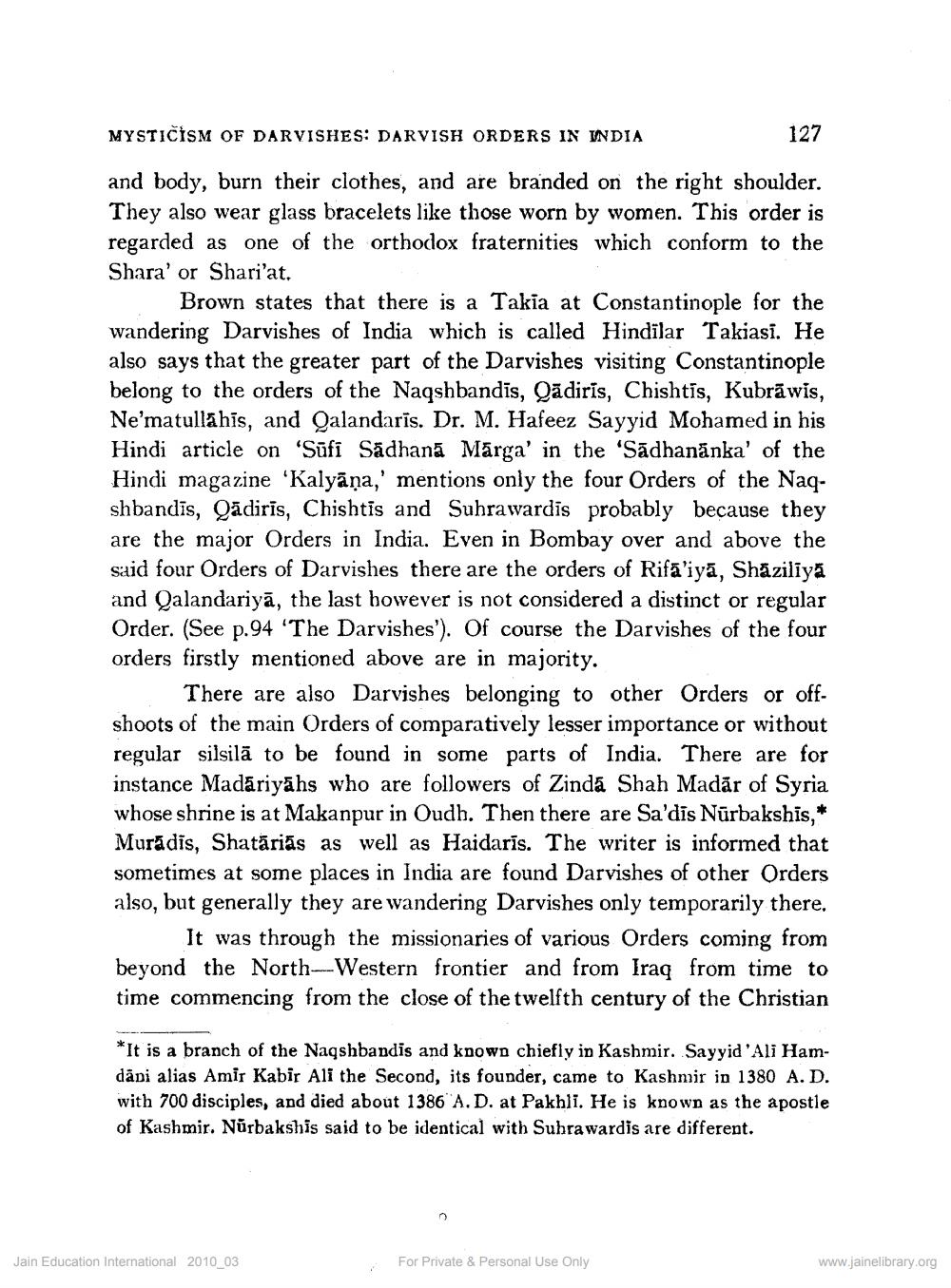________________
MYSTICISM OF DARVISHES: DARVISH ORDERS IN INDIA
127
and body, burn their clothes, and are branded on the right shoulder. They also wear glass bracelets like those worn by women. This order is regarded as one of the orthodox fraternities which conform to the Shara' or Shari'at.
Brown states that there is a Takia at Constantinople for the wandering Darvishes of India which is called Hindilar Takiasi. He also says that the greater part of the Darvishes visiting Constantinople belong to the orders of the Naqshbandis, Qadiris, Chishtis, Kubrāwis, Ne'matullahis, and Qalandaris. Dr. M. Hafeez Sayyid Mohamed in his Hindi article on 'Sūfi Sādhanā Mārga' in the 'Sādhanānka' of the Hindi magazine Kalyāna,' mentions only the four Orders of the Naqshbandīs, Qadiris, Chishtis and Suhrawardis probably because they are the major Orders in India. Even in Bombay over and above the said four Orders of Darvishes there are the orders of Rifa'iyā, Shaziliya and Qalandariyā, the last however is not considered a distinct or regular Order. (See p.94 'The Darvishes'). Of course the Darvishes of the four orders firstly mentioned above are in majority.
There are also Darvishes belonging to other Orders or offshoots of the main Orders of comparatively lesser importance or without regular silsilā to be found in some parts of India. There are for instance Madariyāhs who are followers of Zinda Shah Madār of Syria whose shrine is at Makanpur in Oudh. Then there are Sa'dis Nūrbakshis,* Muradis, Shatáriás as well as Haidaris. The writer is informed that sometimes at some places in India are found Darvishes of other Orders also, but generally they are wandering Darvishes only temporarily there.
It was through the missionaries of various Orders coming from beyond the North-Western frontier and from Iraq from time to time commencing from the close of the twelfth century of the Christian
*It is a branch of the Naqshbandis and knowo chiefly in Kashmir. Sayyid 'Ali Hamdāpi alias Amir Kabir Ali the Second, its founder, came to Kashmir in 1380 A.D. with 700 disciples, and died about 1386 A.D. at Pakhli. He is known as the apostle of Kashmir. Nürbakshis said to be identical with Suhrawardis are different.
Jain Education International 2010_03
For Private & Personal Use Only
www.jainelibrary.org




